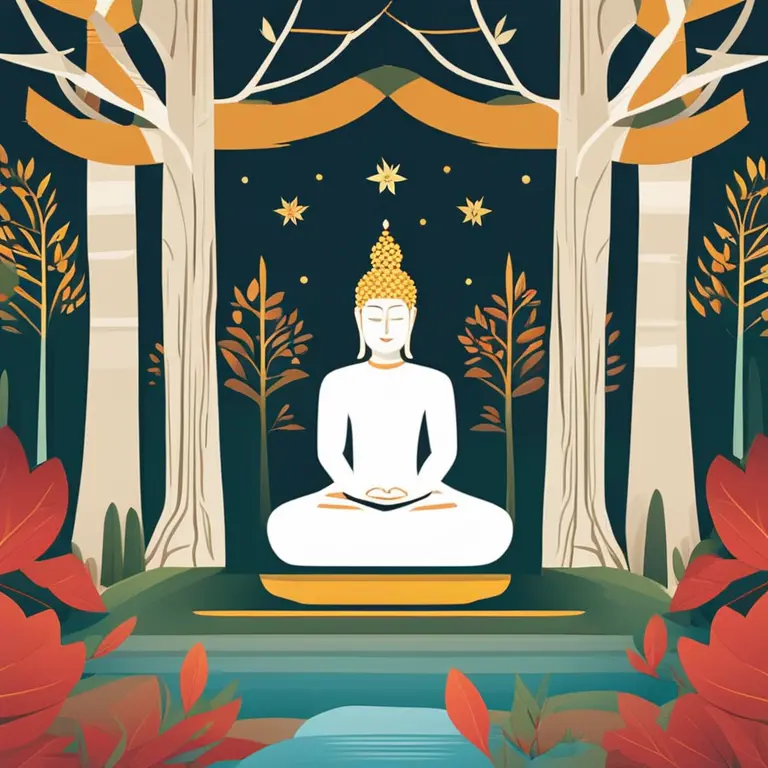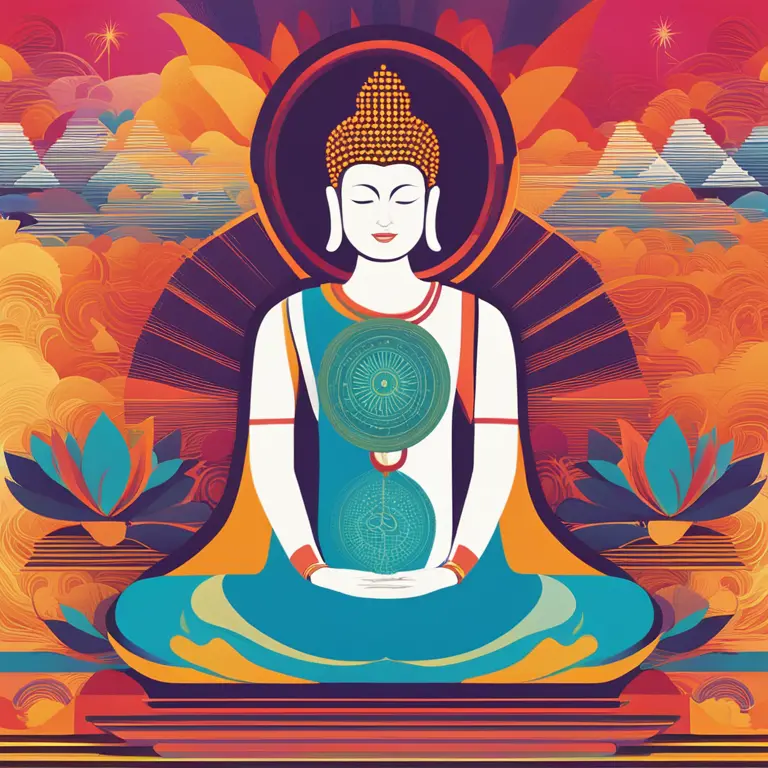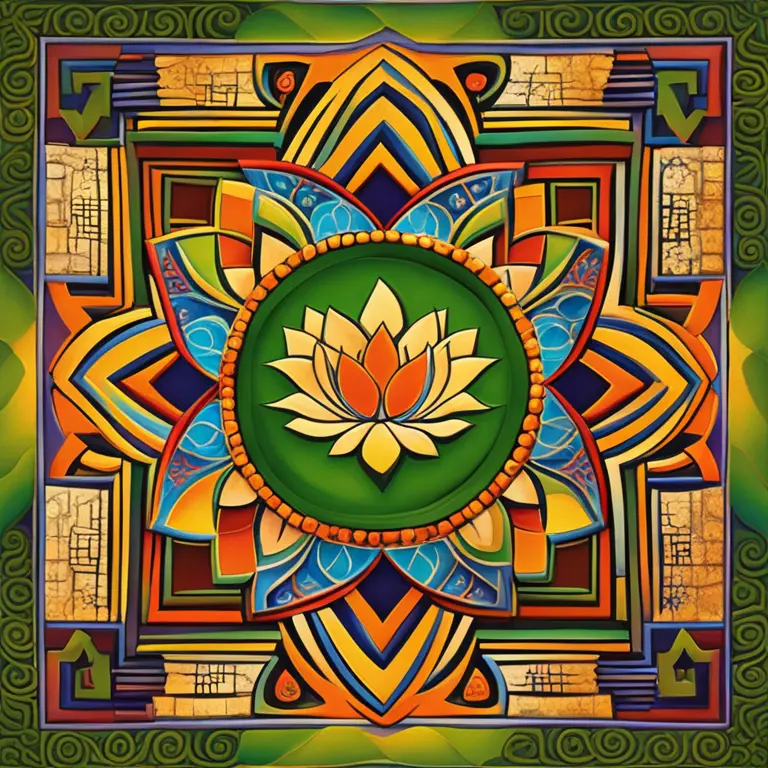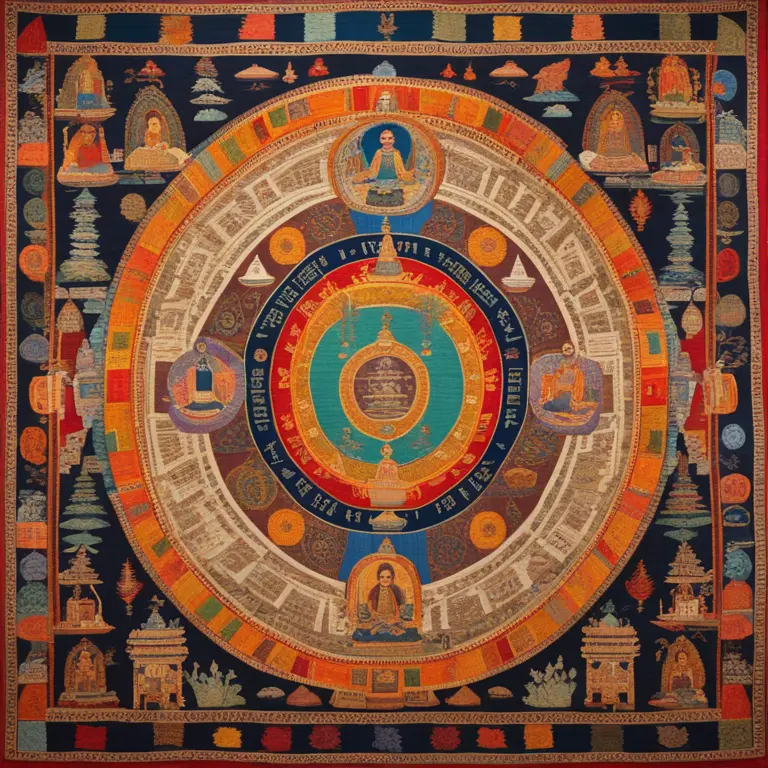
The Origins of Meditation: A Historical Glimpse
An insightful journey into the rich history of meditation, examining its origins and the figures who cultivated this ancient practice.
article by Hina Kurosawa
The Dawn of Meditation: A Primal Practice
The concept of meditation cannot be credited to a single individual or a specific time, as it is a practice deeply interwoven with the spiritual fabric of many ancient civilizations. Traces of meditative techniques are found in prehistoric traditions that date back thousands of years. The earliest documented records show meditation within the context of religious and spiritual gatherings, suggesting a collective and evolutionary origin. From the ascetics of the Indian subcontinent to the shamans of indigenous tribes, meditation served as a gateway to the spiritual realm and a method of inner harmony long before written history.

The Tapestry of Meditation in Antiquity
The threads of meditation run through various ancient cultures, each weaving it within their spiritual landscapes. The Vedas, ancient Hindu scriptures that are among the oldest texts on Earth, speak of meditative traditions dating back to around 1500 BCE. Similarly, Buddhist texts highlight Siddhartha Gautama (the Buddha), who lived around 500 BCE, as a central figure in the popularization of meditation. Meditation in Buddhism aims to cultivate mindfulness and achieve enlightenment. Meanwhile, in China, texts as early as the 6th century BCE describe Taoist practices resembling meditation, aimed at aligning oneself with the Tao — the fundamental principle underlying the universe.

Meditative Practices within Different Cultures
While the Indus Valley and Far East have often been highlighted in the narrative of meditation's history, it is essential to note its presence globally. The early Greeks practised forms of contemplation and mindfulness, undoubtedly at the crux of their philosophical meditations. In Africa, meditation was embedded within indigenous spiritual rituals. Across the oceans, Native American traditions also embraced the meditative journey, often within the context of healing and guidance from the spirit world. Each culture's contribution to the tapestry of meditation's history is a testament to the universality of the inner quest for peace and understanding.

The Evolution and Modernization of Meditation
Moving beyond its ancient roots, meditation has undergone significant transformations. In the modern era, starting from the late 19th century, figures like Swami Vivekananda introduced Eastern meditative philosophies to the West. The 20th century saw an unprecedented surge in the popularity of meditation, with transcendental meditation, mindfulness, and scientific research on its benefits becoming part of the mainstream conversation. Now, in 2024, meditation is recognized for its mental, physical, and emotional health benefits and has been integrated into various therapeutic practices, making it accessible to a wider demographic than ever before.

Meditation Today: New Frontiers and Continued Legacy
Today's meditation practices span a wide spectrum from traditional to contemporary. Technological advancements like virtual reality meditation and biofeedback tools have emerged, offering new pathways to deepen one's practice. Influential leaders in the field of mindfulness and well-being continually develop and adapt techniques to meet the challenges of modern life. Yet, despite its evolution, the core of meditation remains the pursuit of stillness, self-awareness, and connection with something greater than oneself — principles that reflect its ancient origins.
Published: 1/14/2024
Modified: 1/15/2024
More predictions
Come back here soon to learn more about yourself and your future


Healing Through Mindfulness: Meditation & Trauma Recovery
Mindfulness meditation offers a powerful tool for individuals seeking solace and healing from traumatic experiences. Discover how this practice can aid in the journey towards inner peace.


Mindfulness Meditation: A Handbook for High Schoolers
Discover how mindfulness meditation can benefit high school students, enhancing focus, reducing stress, and promoting overall well-being.


Discovering Life with Meditation Mantras
Delve into the transformative power of meditation mantras to harmonize your mind, body, and spirit for a tranquil existence.